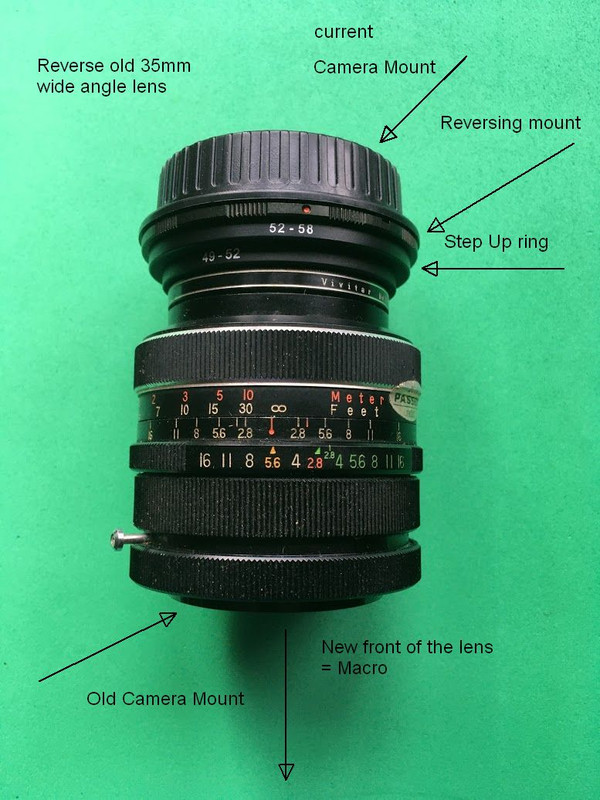- Joined
- Dec 9, 2006
- Messages
- 22,784
- Reaction score
- 14,630
- Location
- Maine
- Can others edit my Photos
- Photos OK to edit
- Moderator 🛠️
- #1
This was posted in another thread a few years ago, so I'm putting it in a dedicated post.
There are a few ways to get really close photos without an actual macro lens. This is just one: coupling two lenses of different focal lengths together, front-to-front.
Put the larger focal length lens on the camera and couple the smaller focal-length lens to it, front-to-front. There are double-threaded rings that are made for this, but I just used gaffing tape. I like it becasue it's flexible, fairly strong, but doesn't leave a sticky residue like duct tape.
Here, I am using a 50mm on the camera and a mounting a 24mm to that.
The two lenses used - 50mm and 24mm primes.

Using gaffing (or gaffer's) tape to couple the lenses. Just wind the tape arounf the lenses a couple of times. If you have enough coordination, you can try just holding them together.

The rig mounted on the camea; in this case, my old D40.

The subject (normal photo)

The closeup with the rig.

There are a few ways to get really close photos without an actual macro lens. This is just one: coupling two lenses of different focal lengths together, front-to-front.
Put the larger focal length lens on the camera and couple the smaller focal-length lens to it, front-to-front. There are double-threaded rings that are made for this, but I just used gaffing tape. I like it becasue it's flexible, fairly strong, but doesn't leave a sticky residue like duct tape.
Here, I am using a 50mm on the camera and a mounting a 24mm to that.
The two lenses used - 50mm and 24mm primes.

Using gaffing (or gaffer's) tape to couple the lenses. Just wind the tape arounf the lenses a couple of times. If you have enough coordination, you can try just holding them together.

The rig mounted on the camea; in this case, my old D40.

The subject (normal photo)

The closeup with the rig.

Last edited:








![[No title]](/data/xfmg/thumbnail/36/36299-468f060314a0ac2bf5e37da1c33149d2.jpg?1734168618)


![[No title]](/data/xfmg/thumbnail/39/39511-592cbd68b1d797ffce7e41e4fbfed890.jpg?1734173657)



